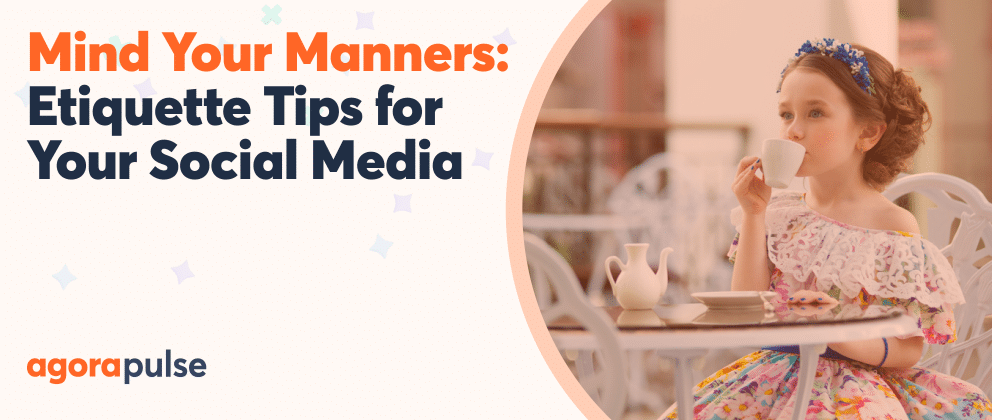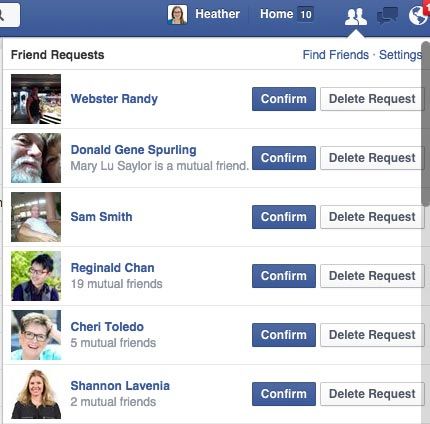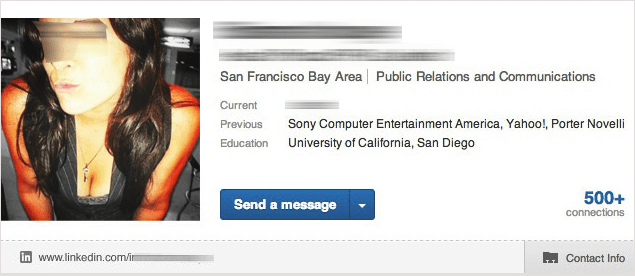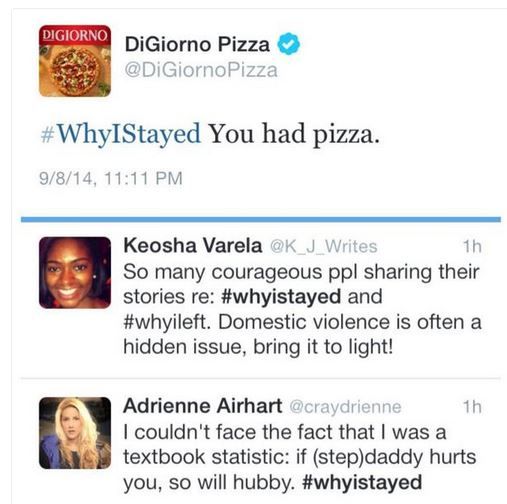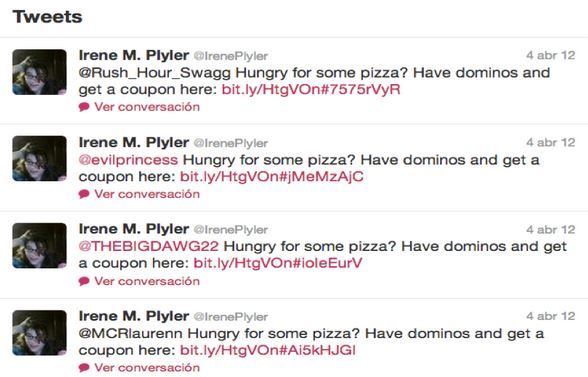Are you using your best manners on social media? Or do you need a little brushing up on your social media etiquette?
Observing good etiquette isn’t reserved for black-tie galas or cotillion classes. It’s about abiding by common (maybe not so common) sense, basic manners, and an understanding of the rules of the game.
And just like we sometimes need reminders about good etiquette at the dinner table, we may need reminders of the basic rules of etiquette in social media.
Facebook Etiquette
Do you find yourself enjoying Facebook but wondering if you’re “doing the right thing” as it relates to business?
Let’s take a look at how to use proper Facebook etiquette.
Mind your tone on Facebook
As in the offline world, your tone of voice is important on Facebook. When you respond to someone, whether privately or on a public post, make sure that you share from your point of view and that you don’t make your comments sound accusing or attacking.
Social media conversations can get heated. However, there is never a need to take conversations to the point of being rude and unprofessional.
Simple things like exclamation points can mislead people and cause for heart rates to increase and tempers to flare.
Re-read anything before you hit “post.” Doing so can safeguard you from impulsive situations that could have been diffused.
If the conversation is bothersome to you, you are better off to just say something professionally and disagree rather than getting into a heated debate involving name-calling or slanderous words.
Respond quickly to comments
Take the time to respond to comments on your business page as well as on other pages where people have mentioned you.
Sometimes, they ask you a direct question and want a response. However, sometimes they just do an @mention because they want you to know that they wanted you to be a part of the conversation.
By quickly responding, you let everyone know that you are engaged on Facebook and really pay attention to the conversations that are taking place.
Not everything should be posted on the public wall
Have you ever made a mistake or typo? Would you prefer someone to publicly tell you about it on your Facebook page or to send you an email or Facebook message letting you know that a correction needs to be made?
I can tell you that I have had someone publicly tell me of a correction that was needed and it could have been done in a much nicer way.
If you notice a correction that needs to be made or that you have a really sensitive question, don’t post it on the public wall for all to see.
The personal vs. business connections on Facebook question
Facebook is one of the places that most people have their privacy settings very high. For many, that means that unless they know you personally in real life, and are friends or family they do not want to be connected with you on their Facebook personal page.
And they have that right.
Therefore, don’t just automatically send a friend request to someone every single time that you meet them.
If you feel as if you want to try and make that connection, check whether you have any common friend connections. (Trust me, they too will be checking to see if you have mutual connections.)
If you feel you want to still reach out to them with a personal Facebook friend request, send them a message if their privacy settings allow for it. In that message, share briefly how you are connected and the initial reason for your friend request.
Don’t overshare on your personal page about your business page
According to Facebook terms, you want to make sure that you have a business Facebook page to conduct your business.
However, there are still many perks and benefits to posting on your personal page about your business.
If you are an entrepreneur and small business owner working very hard, you probably consider your business to be your passion and it is something you love. It makes complete sense that some of your business topics make their way over to your personal page.
A good rule of thumb is to post 20% of the time about what is happening in your business with your personal Facebook page.
For example, that would mean out of every 5 posts, only 1 would be about your business. This is subtle enough that it isn’t overwhelming, but it allows people to venture over to your business page if they want to learn more about what you do.
Read rules of groups before posting
Make sure that you know very specifically the guidelines and rules in each Facebook group when posting.
Some groups encourage you to promote and share your own content on certain days and in certain posts. Other groups don’t ever allow self-promotion.
The worst thing you can do when you are new to a group is to violate the community’s procedures.
By taking the time to read carefully the rules of each group, you will be able to know exactly how the group wants people to post and it will let you get off to a great start with a good first impression.
Think before you tag or mention people
Some people on Facebook take great pains to make sure they look great in the photos they are tagged in.
Other Facebook users don’t really care and want as much exposure as possible.
With that in mind, think about the person’s Facebook style before you tag that person.
If the photo is a good photo of them and they are a public person, it is usually acceptable to tag them in the photo so that they see that they are now linked to the photo.
If there is any doubt as to if they would want to be tagged, send them a Facebook Message first and tell them that you posted the photo and that they are welcome to tag themselves in the photo.
You don’t want to mention someone or a business in a Facebook post if they don’t have anything to do with the post.
Many will see this as you simply trying to take advantage of their following and it can lead to a negative reflection on you or your business. We know that isn’t what you want.
To be effective as a business using Facebook, treat people with respect, and use proper Facebook etiquette to get the best results. Facebook business pages may not be the answer for your business, but either way, when you treat people the way you’d like to be treated, it helps everyone feel valued and Facebook is a much happier place to be.
In addition to etiquette on Facebook, you also need to know how to use good manners on Instagram.
LinkedIn Etiquette: Are You Breaking the Rules?
Like every social network, LinkedIn has its own official rules of conduct. But most LinkedIn etiquette expectations come from the LinkedIn community.
Here are a few tips to help you network like a pro on the world’s top professional networking site.
Do connect straight away
If you’ve just returned from a conference or expo, connect with the people you met via LinkedIn first. It may seem a bit stalkerish to immediately connect but trust me … If you wait a week, people won’t remember who you are!
When you invite people to connect with you on LinkedIn, be sure to send a personalized message such as:
Hi Steve,
It was great to meet you at the Social Media Conference in California where I found your insights about sponsored content to be especially interesting.
Let’s have that Skype call to move things on to the next stage.
Kind Regards,
Charli
Keep your first personalized message short and to the point. It is overwhelming to receive a long email from a contact you are still trying to place.
Do update your profile regularly
Your career path is constantly changing with new achievements, skills, or perhaps a new direction so it is important that you regularly update your LinkedIn profile.
Potential recruiters will only look at your profile for a few seconds, so make sure that your key achievements are bulleted or placed at the top.
Turn off your activity when you’re updating your profile. This is so you don’t annoy connections in your feed who will be notified each time you change something—and also not to alert your boss if you are tidying up your profile ready for a career move!
Do remove or replace irrelevant recommendations
If your job responsibilities have changed drastically in the last five years, a recommendation saying “Charli makes great coffee and quickly photocopies documents” is no longer helpful to your role as a marketing VP!
There are two things you can do here: Either delete the recommendation or “Ask for changes” from the reviewer. Send a friendly message saying you’d love if he or she could update your recommendation to reflect your new role and duties. Of course, you should only do this if you are still working closely with the reviewer … Never expect LinkedIn connections to lie or fabricate a recommendation.

Recommendations are great to receive, so be sure to thank someone who has provided a positive one. You can say thank you publicly or in a private message with a nice thank you JPEGmade in Canva.
Don’t recommend substandard employees
Each week, I receive a new recommendation request and I really love writing them for people… If I really mean it. There is no obligation whatsoever to write a recommendation that you do not truly believe in. For example, imagine you get a request from a guy who used to work with you. He showed up late, didn’t work as a team member, and everyone was happy when he finally quit.
Now, he wants a recommendation.
As he’s in your industry, it may reflect poorly on you if you publicly recommend someone who is known to be a low performer.
My best advice here is to simply ignore the request. If a reminder is subsequently sent, you may need to politely explain your reasons and wish that person success in their career.
Don’t post inappropriate things
LinkedIn is not Facebook or Instagram, it’s a professional site and its members are fiercely protective of what it stands for. Here’s a quick guide of what you may and may not post…
Do Post:
- Company recruitment news
- Photos of corporate events, expos or conferences
- Links to your published articles, presentations or portfolio
- News items relevant to your network
- Achievements and certificates
- LinkedIn Articles
Don’t Post:
- Revealing or unprofessional photos
- “Share this to save a puppy” style memes
- Puzzles, games or teasers
- Updates about what you’re having for breakfast
- Boasting posts about your success/car/house etc
- Spammy offers or “share to win” promotions
Content on each of your social networks needs to be unique. Desperately need to post a photo of you in a bikini? Get on Instagram!
Do keep company pages updated
If you’re managing the social media for your brand then having a company LinkedIn page and keeping it updated is important. This is one of the top places potential clients and employees will look at your company so it needs to be professional, informative and updated.
In fact, for my brands, I often create Showcase pages. These allow you to make subpages based on region, products, or interests.
Here’s one I made for financial firm easyMarkets which is a global company and therefore needs to be viewed in languages other than English.
LinkedIn company updates can still be people-centric. Feature staff interviews, team events and professional open day photos in addition to your text updates.
Don’t ignore recruiters when you’re not looking for a job
Maybe you love your job and have no interest in leaving for the next 10 years.
Great. That doesn’t mean you should ignore recruiters because you never know when you may need them or what great opportunities they may have for you. Recruiters work super hard and it can be very frustrating to be ignored by numerous candidates … don’t be that person.
If a recruiter messages you with a job opportunity you should always reply. This is the type of reply I send if I receive a job offer:
Thank you so much for your message regarding the job opportunity.
Kind Regards,
Charli
Linkedin is a secure and confidential network, but be wary of using it for job-seeking while in your office. If your company monitors Internet traffic, this won’t look good for you. Save the job-seeking until you get home!
Do network in groups
LinkedIn groups are a great place to network with industry peers, suggest new ideas and arrange events. If you are a member of numerous groups then you may wish to adjust your settings so that you are not bombarded with notifications.
Be mindful about the content you are posting and never copy and paste the same link to all your groups.
In all probability, the membership in these groups will probably overlap and therefore you will just be viewed as a spammer and possibly removed from the group entirely. Keep updates personalized and relevant and remember to engage in conversation on posts other than your own.
Nobody likes a spammer so be mindful of your posts. Similarly, if you manage a group, keep a low tolerance of spamming for the sake of other group members. Provide one warning and then remove the offender.
Take your first step by connecting with me on LinkedIn. Don’t forget that brief, personalized introduction!
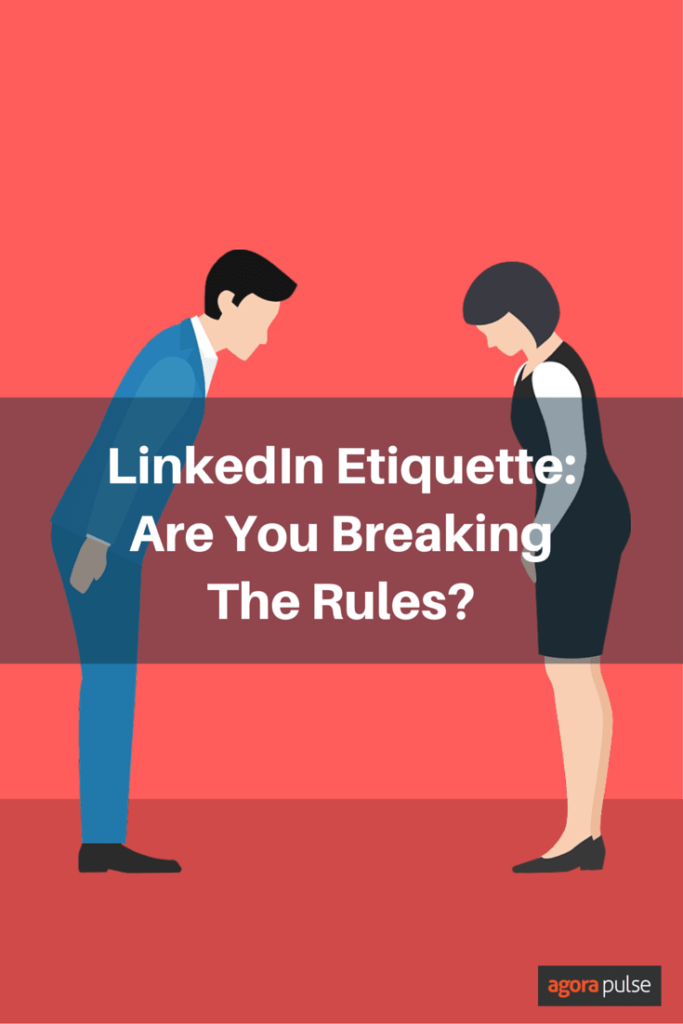
So what is Twitter etiquette and how do you avoid an etiquette faux pas?
Beyond Twitter’s Terms of Service there are no official guidelines for using this social media platform. With over 316 million active users, you can be sure that everyone is using Twitter differently.
So let’s lay down some ground rules.
Twitter Etiquette
So, what about etiquette on Twitter?
Let’s take a look at what not to do, which can help you know what to do.
Stop neglecting customers
Did you know that 53% of users who tweet a brand expect a response in 1 hour? If your brand is on Twitter, then you need to take that statistic seriously.
British Airways learned this lesson in 2013 after a customer spent $1,000 to promote a tweet slamming the airline on Twitter. The tweet, sent by a frustrated Hasan Syed whose luggage had been lost by BA, was seen by nearly 77,000 users and went like this:
If your brand is on Twitter, you need to respond promptly to customers. View Twitter as an extension of your live chat facility and allocate the appropriate staffing.
Stop abusing hashtags
Firstly, hashtags in tweets are awesome and usually receive around more retweets, but hashtag abuse needs to stop! #Dont #Use #Too #Many #Hashtags #In #Your #Tweets. Need I say more?
More than three on Twitter can make you look like a spammer and give the illusion that you are an amateur. In fact, research shows that when you use more than three hashtags in a tweet, engagement actually drops by 17%.
Far worse is the misuse of trending hashtags by brands who have not taken 10 seconds to research them before throwing them into a tweet. It’s pure laziness and 100% avoidable.
Take this classic Twitter faux pas by DiGiorno pizza who used a hashtag about domestic violence to sell pizza. Whether you do it accidentally or on purpose… Don’t!
The DiGiorno Pizza hashtag was an accident but there have been many cases of brands abusing hashtags to sell products. It never works out well.
Understand trending hashtags before you use them and stick to three or fewer per tweet.
Stop spamming
Spammy marketing doesn’t work.
40% of all social media accounts in circulation are spam and 8% of all tweets are spam, too!
So, what is spam?
While Twitter spam includes the obvious like unsolicited sales messages, it can also include unintentional spam. This includes …
- Copying random people on tweets
- Including a list of users on an ongoing conversation
- Copy/pasting the same tweet to different people
- Sending automatic “Thanks for following … check out my website!” Direct Messages to new followers
Spammers usually don’t build followers or generate genuine conversations and ultimately end up blocked. Don’t be one of them. Focus on building relationships as opposed to promoting yourself.
Before you send that tweet, ask yourself: Am I adding value and building relationships on Twitter? If the answer is no, then stop yourself.
Stop oversharing
Sharing is caring. Oversharing is … well … pretty horrid!
Recent oversharing I have seen included the live-tweeting of a birth including contractions, placenta, toilet breaks, and finally, baby complete with photo.
Remember that every single one of your followers can see your updates.
Did you really want to share all that information with them? How about with potential employers, 51% of whom will check out your social feeds before interviewing you?
Other examples of oversharing include:
- Tweeting too much about your relationship status
- Tweeting your check-ins … everywhere you go
- Tweeting pictures of every single morsel you put into your mouth
- Having personal conversations out in the open with other Twitter users
You don’t have to share everything. Less is most definitely more.
* * *
Charli Day and Heather Heuman contributed to this article on social media etiquette.
Get started on saving time and energy on your social media management! Check out our free trial of Agorapulse to help you schedule, track, and measure all your social media efforts.
